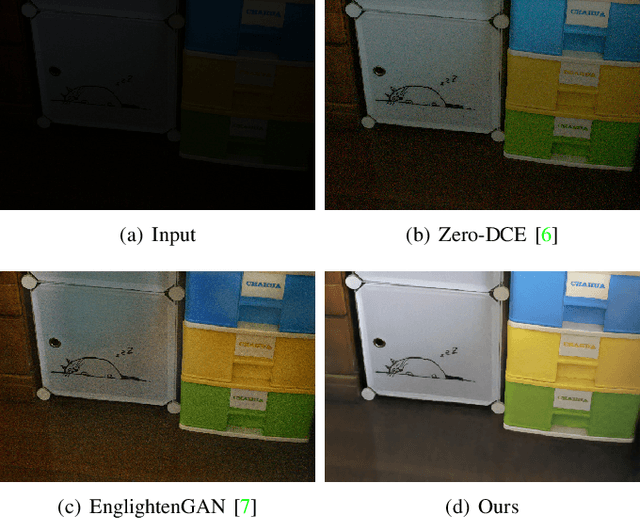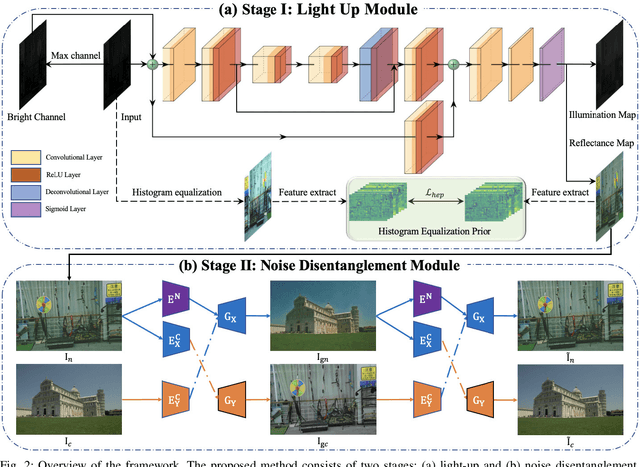Yishi Sun
Unsupervised Low-Light Image Enhancement via Histogram Equalization Prior
Dec 03, 2021



Abstract:Deep learning-based methods for low-light image enhancement typically require enormous paired training data, which are impractical to capture in real-world scenarios. Recently, unsupervised approaches have been explored to eliminate the reliance on paired training data. However, they perform erratically in diverse real-world scenarios due to the absence of priors. To address this issue, we propose an unsupervised low-light image enhancement method based on an effective prior termed histogram equalization prior (HEP). Our work is inspired by the interesting observation that the feature maps of histogram equalization enhanced image and the ground truth are similar. Specifically, we formulate the HEP to provide abundant texture and luminance information. Embedded into a Light Up Module (LUM), it helps to decompose the low-light images into illumination and reflectance maps, and the reflectance maps can be regarded as restored images. However, the derivation based on Retinex theory reveals that the reflectance maps are contaminated by noise. We introduce a Noise Disentanglement Module (NDM) to disentangle the noise and content in the reflectance maps with the reliable aid of unpaired clean images. Guided by the histogram equalization prior and noise disentanglement, our method can recover finer details and is more capable to suppress noise in real-world low-light scenarios. Extensive experiments demonstrate that our method performs favorably against the state-of-the-art unsupervised low-light enhancement algorithms and even matches the state-of-the-art supervised algorithms.
 Add to Chrome
Add to Chrome Add to Firefox
Add to Firefox Add to Edge
Add to Edge